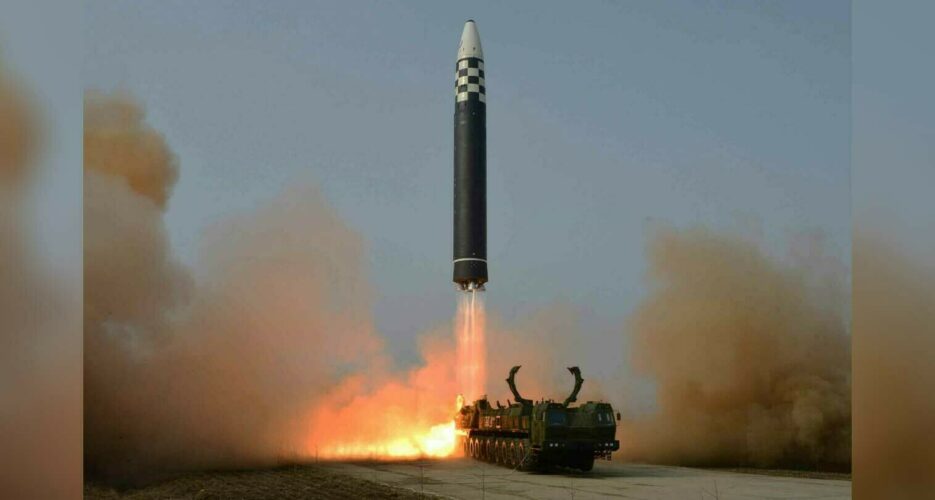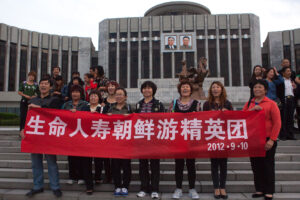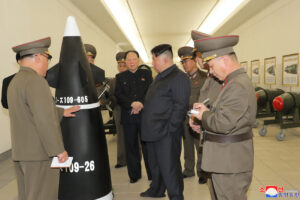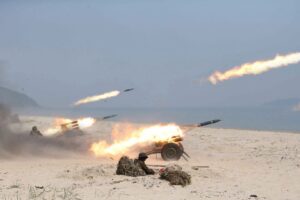North Korean leader Kim Jong Un guided the successful test-launch of a new "powerful tool for nuclear attack" called the "Hwasong-17" intercontinental ballistic missile (ICBM) on Thursday as part of efforts to "contain" the U.S., state media reported the following day.
Pyongyang claimed it carried out the test to "ensure the scientific and technical reliability of [the Hwasong-17's] prompt operation under the wartime condition," as neighboring countries and the U.S. condemn the launch as a major provocation.
North Korean leader Kim Jong Un guided the successful test-launch of a new "powerful tool for nuclear attack" called the "Hwasong-17" intercontinental ballistic missile (ICBM) on Thursday as part of efforts to "contain" the U.S., state media reported the following day.
Pyongyang claimed it carried out the test to "ensure the scientific and technical reliability of [the Hwasong-17's] prompt operation under the wartime condition," as neighboring countries and the U.S. condemn the launch as a major provocation.
Try unlimited access
Only $1 for four weeks
-
Unlimited access to all of NK News: reporting, investigations, analysis
-
Year-one discount if you continue past $1 trial period
-
The NK News Daily Update, an email newsletter to keep you in the loop
-
Searchable archive of all content, photo galleries, special columns
-
Contact NK News reporters with tips or requests for reporting
Get unlimited access to all NK News content, including original reporting, investigations, and analyses by our team of DPRK experts.
Subscribe
now
All major cards accepted. No commitments – you can cancel any time.













